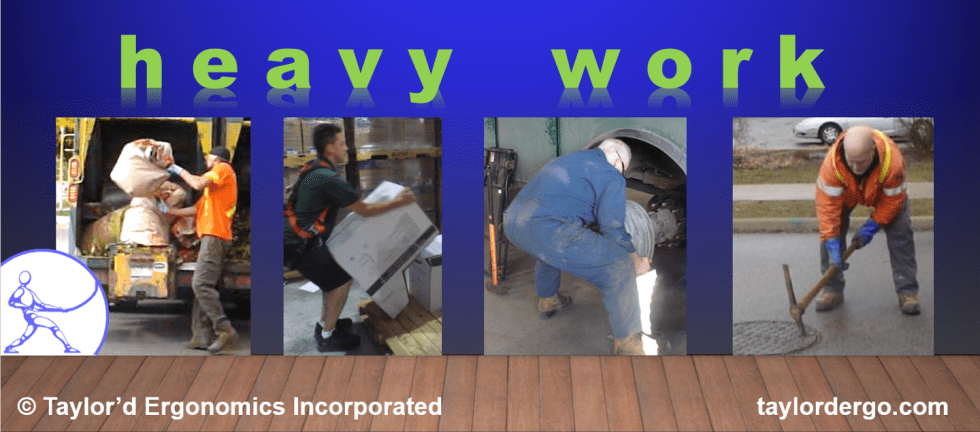Sigh. I suppose we should worry less, when heavy jobs are performed only by stronger workers. But, truth be told, what ergonomists hear is, “We know this is a really heavy job. Our solution is to hire the biggest, strongest people we can find. We don’t expect any woman to want the job. We don’t think it’s possible to improve it.” Somehow, this approach makes ergonomists worry more, not less.
(You might think that “all-male” jobs are rare in this decade, but we assure you that we still encounter plenty of jobs where every single employee identifies as male.)
Yes, we can assess strain/sprain injury risk for an all-male population, if that’s what you really want. But maybe you don’t. Read on to find out why.
First off, we acknowledge that some jobs are simply too heavy for small, physically-weak people to do; firefighters and paramedics have to be strong enough to lift big people out of dangerous situations. (And the injury rates in these occupations suggest that, even with this hiring approach, we’re still not winning the battle. Equipment and devices to improve these jobs are still in high demand.) For other occupations, hiring big, strong people is a lousy alternative to improving job design. Here’s why.
- You might have one area where only the toughest employees can work, and maybe they even take pride in being part of that culture. They see work as exercise. But at some point, you’re bound to find that there simply aren’t enough of these people to run your operation. When people call in sick or take a vacation, you’ll bring others into an ergonomically toxic environment.
- Maybe you’ve been lucky for years, with big strong employees and a suitable number of backups. But eventually, they will retire. If layoffs occur due to economic downturn or increased automation, you’ll find yourself with fewer people who are able and willing to do the tough jobs, and even fewer jobs available to accommodate injured workers.
- From a hiring perspective, think about how much easier recruitment would be if you didn’t have to find people with exceptional physical strength.
- Even the strong can wear out, and when they do, it’s more costly. In the environment I’ve described, people don’t report injuries until they can no longer work at all. By this point, the injuries are much more severe, and more permanent.
We have studied many jobs that are stubbornly resistant to ergonomic improvement, where we do what little we can, and hope for the opportunity to overhaul the entire line in the future. It’s worthwhile to revisit these jobs every few years. Robotics, exoskeletons, and other types of automation are advancing quickly; what was recently impossible might now be quite straightforward. Solutions that used to be very complex and expensive are becoming much more practical.
Fitting people to work, by placing the strongest worker on the heaviest job, is possible, but it opposes every ergonomist’s goal of fitting work to workers. Let us help you make jobs possible for anyone to perform, comfortably. Let’s take another look at that job that seems “impossible” to improve. Think how much easier it would be to operate if the job could be performed safely by everyone.
P.S. We use “male” and “female” strength data to assess jobs, because the data that is currently available is organized in this way. The current “best practice” in ergonomics is to assess jobs against a threshold that will protect at least 75% of the working population. For a job performed by both male and female workers, using female strength data protects most males.
Did you enjoy this article? Sign up to receive an email with a link to our weekly blog, here.
Need an ergo assessment for a tough job? Contact Carrie@TaylordErgo.com or 519-623-7733, or set up a meeting here: https://calendly.com/carrie-taylordergo/ergonomics-check-in


